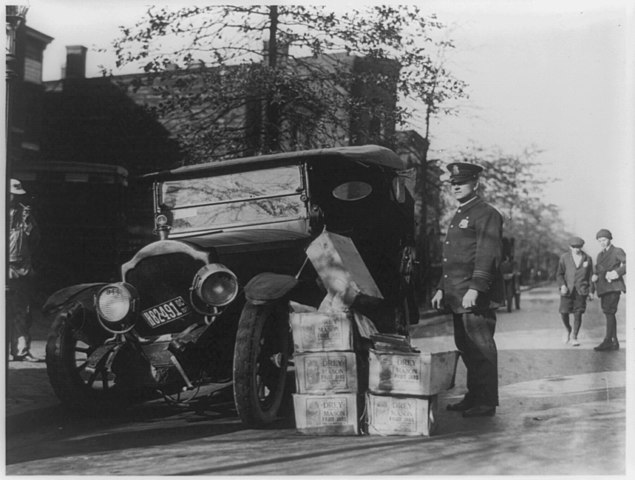How No Drinking Led to Speed Racing

You don’t need me to tell you this, but drinking alcohol and driving — they don’t mix. As the National Highway Traffic Safety Administration reports, “every day, about 37 people in the United States die in drunk-driving crashes,” and importantly, “these deaths were all preventable.” So do your part and don’t drive drunk, and find alternative transportation for those with you who would.
On the other hand, driving sober with a lot of alcohol in your car? That’s probably legal and probably safe. And, historically, it helped create a very popular pastime — in part because it was once illegal and not so safe.
From 1920 until 1933, the United States entered the period known as Prohibition; the production, sale, and transportation of alcoholic beverages were outlawed throughout the country. But, of course, people still found a way to drink. The United States already had a long history and tradition of people making their own booze; in the 1790s, many farmers west of the Appalachian Mountains took unsold grain and distilled it into whiskey, and then sold the spirits to make some extra income. (Federal efforts to tax this practice led to an armed insurrection.) By the time Prohibition went into effect, there were plenty of people able to produce their own whiskey — typically called “moonshine” — and give or sell it to those in their communities, in violation of the law. Local authorities typically didn’t care about this illicit activity, and federal authorities weren’t able to stop every single ma-and-pa bathtub distillery out there. As long as the moonshine stayed within the confines of one’s local community, more often than not, no one cared to stop it.
But, of course, the alcohol didn’t always stay local. Like any other banned item, supply was short, and in this case, demand remained high, leaving a very profitable opportunity for anyone who could distribute moonshine to areas outside their own. And, as luck would have it, Prohibition coincided with the adoption of a new-ish technology at the time: the automobile. In 1912, just a few years before Prohibition began, there were fewer than ten vehicles in the U.S. per 1,000 people; by the late-1920s, there were roughly 200 cars per 1,000 people. If you had a car and could drive it quickly, you could become a bootlegger — someone who tried to sell your moonshine. It didn’t always go your way, though. The image above, for example (via Wikipedia) shows a police officer successfully apprehending a bootlegger who wrecked his car while trying to transport a bunch of moonshine to points unknown.
To increase their odds of success, many bootleggers invested in their cars, hoping to outrace the cops. As HowStuffWorks relays, bootleggers would retrofit their mass-produced cars with better parts, including “the most powerful V-8 available at the time — an ambulance engine” and to the steering and handling, allowing the drivers to make tighter turns. But on the outside, the cars looked like any other cars; “normal enough to avoid attention,” as Smithsonian notes. The best drivers were able to avoid the police during this ongoing game of cat and mouse. And when these drivers weren’t running their moonshine, they passed the time by racing one another for bragging rights. Almost everyone wanted to be the fastest driver with the fastest car.
When Prohibition ended in 1933, the business of bootlegging began to dry up. Many drivers still could earn a living, to a degree, smuggling whiskey for distillers who wanted to avoid paying taxes on it, but the competition from now-legal producers and merchants ate into their income. But these men were still fantastic drivers with really fast cars. Per Smithsonian, “the runners found themselves with souped-up cars yet out of work—though they continued to take part in organized races. On December 14, 1947, one of these runners, Big Bill France, held a meeting with other drivers, car owners, and mechanics to finally put in place some standardized rules for the races.”
Two months later, the drivers held their first race under the auspices of their new organization. They called it the “National Association for Stock Car Auto Racing,” but today, we call it by its acronym: NASCAR.
Bonus fact: NASCAR has a lot of rules, as you’d expect, in order to keep drivers as safe as possible while flying around the course at high speeds. Drivers have to get a special license from the organization to participate, and it’s expensive, costing roughly $2,500 a year. But they don’t need to learn how to parallel park or otherwise pass a state driving test. As Autoweek notes, the $2,500 NASCAR permit is all the body requires from a licensing perspective; they don’t need to ask for a state driver’s license, and “NASCAR drivers don’t need a street license to race”
From the Archives: Hoofing It: When moonshiners cosplayed as cows?
